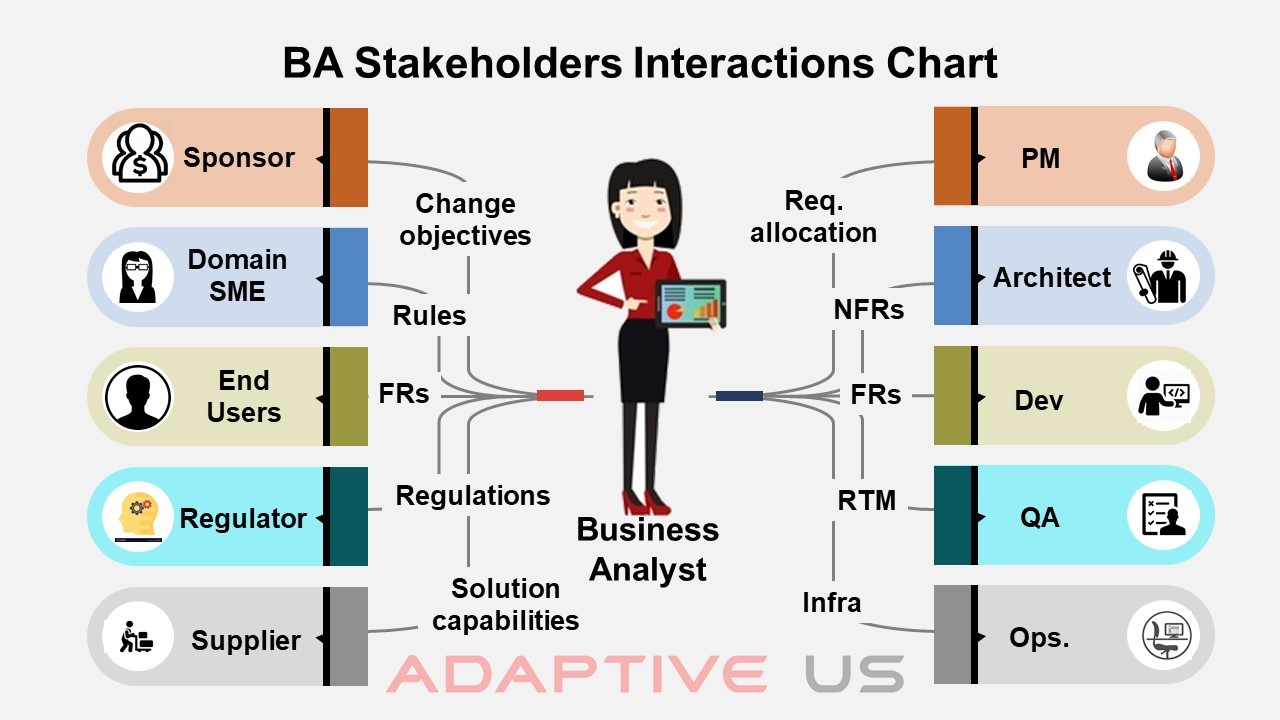Any one hardly talks about a supportive or a friendly stakeholder like a smooth relationship or a process hardly ever catches anyone’s attention.
A stakeholder is an individual or a group who has an interest in the project or the enterprise.
Stakeholders are to be found everywhere in life, not only in projects or among customer groups. Look around they are almost everywhere in life, some are more critical and some little less, some are easy, some are tough, some are out spoken, some silent. Anyone who has an interest and an ability to influence the outcome is a stakeholder.
It takes a team’s effort, great planning, and meticulous execution to make the project a success, and it can take just one tough stakeholder to make it go off track and a complete disaster.
As a business analyst/project manager/scrum master, one needs to use their leadership skills and influencing ability to balance between the stakeholder’s expectation and the project goals hand in hand.
Here is a typical stakeholder interaction chart for a business analyst:

Why should you take stakeholders into confidence
Stakeholders in a project are like members of a family. If there is a harmonious relationship in the family, there is peace at home.
Similarly, for a team to achieve its goals, it is essential to have a harmonious relationship with the stakeholders. A good understanding of the stakeholders and their needs can avoid delays, minimize risks, deliver solutions as planned.
How to sense and identify potential tough stakeholders
A few signs can help one detect a potential tough stakeholder early:
- Lack of proper communication – Doesn’t take/return calls, stays silent to emails, doesn’t share feedback/review on acceptance criteria, no sign off/review on the requirements documents
- Silent stakeholders – Doesn’t participate in project meetings, share their feedback or requirements.
- Showing lack of involvement or urgency.
- Sharing of negative comments on the proposed solution.
- Unfortunately, many times they are influential in the organization.
Here are 4 effective tips to win stakeholders and influence them:
1. Early identification and influence
Pay attention to the above signs and recognize them early on in the project. Keep a close eye on them to see their influence on the project and what motivates them.
Stakeholders can be anyone who is impacted by your project and can have an impact on your project's success also.
Ex – Sponsor of the project, Group heads (IT, HR, Admin, Legal, Travel, Training, Sales, Marketing), key team member in the project/critical resource, senior Executives, government body, supplier, customer, local community, etc. Classify them as per their interest and influence in the project in a 2X2 matrix as shown here:

Spend more time and energy with the top 2 stakeholder categories in the matrix –
- High influence and low-interest Stakeholders are the most critical one’s for you since they have high influence and are people of power in the organization. Seek their opinion for important decisions and show them the value your project will create for them. Understand their needs well and try to meet them
- High influence and high interest – Keep these people in your close confidence since they are highly influential as well as have high interest in your work and the project.
2. Be Patient and Listen to find out their needs
Be proactive to establish a positive relationship with them. Go that extra mile to try to meet them and understand what they have to say.
Try to see their need and where they are coming from.
If there are minor differences, then try to find common ground.
If not, try to influence them on how the current project and its features are a priority, and the other needs can be taken up in further releases.
Try to win their confidence by
- Listening to them with a genuine intent of understanding
- Treating them with respect despite differences of opinions
- Providing them opportunities to share their opinions and thoughts.
3. Meet and take them into confidence
Most people like it when they are given attention.
Make an effort to schedule a time to meet them.
Use that opportunity to better understand their viewpoint, preferred features, motivation for the same, and goal for their function.
Given the extra time and attention, most people turn their resentment to the neutral position.
4. Find out their interest and motivation
Try to find out the reason for the resistance of your stakeholder. The key to managing them is to understand their underlying motivation, features they want, and what they are trying to achieve with those features.
Try to find out:
- Their problem/need/goal for their dept
- What do they envision for their function?
- What are they responsible for?
- What additional responsibility do they have?
Keep your stakeholders engaged and in your sphere of influence
Listen to your stakeholders, talk to them formally and informally, keep them informed on the progress, and appreciate their valuable contribution.
Building a relationship requires extra effort and takes time but goes a long way in making your job easier and faster.
Projects and Initiatives are far more successful when the goals are aligned and in sync.
A great relationship with your stakeholders will reward you in many ways.
Author: Ananya (Ann) Pani, Co-Founder, Adaptive US
 Ananya's mission is to help business analysts to build successful professional careers. She has touched the lives of 5000+ Business Analysis professionals in their skill development journey and helped them unleash their true potential and leverage it to achieve their dream career.
Ananya's mission is to help business analysts to build successful professional careers. She has touched the lives of 5000+ Business Analysis professionals in their skill development journey and helped them unleash their true potential and leverage it to achieve their dream career.
She co-founded Adaptive US, a Business analysis skill development organization working with professionals from 80+ countries in skyrocketing their BA career and staying ahead of the game.
She is a strong supporter of encouraging women workforce in technology and bringing women back to work after long career breaks. 70% of Adaptive's workforce is working moms who have been brought back to work after a career break due to family and other priorities.
She is enthusiastic about fitness, a regular runner, and takes keen interest in imparting value based education to children, building a greener and healthier world.
Please write to Ann if your thoughts are in sync with hers or if they spark a thought in you.